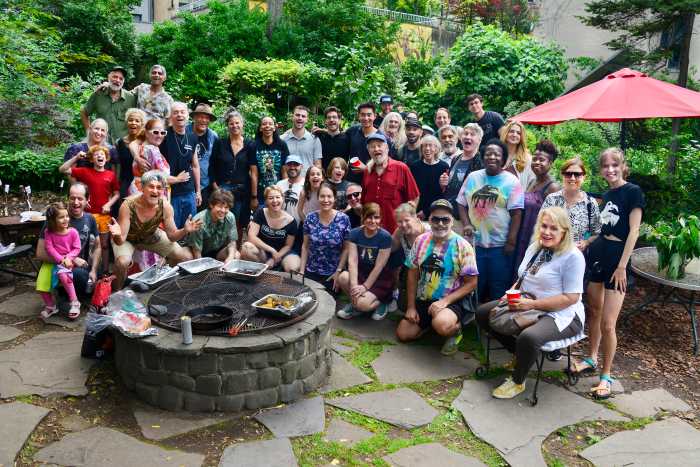By Dan Rosen
Standing on the bank of the East River near 20th St. on a recent morning, in a small park he helped create, William Oddo explained the problem: His community needs to get out on the water.
The concrete of Manhattan behind him, Oddo was in Stuyvesant Cove Park, which opened in 2002 after a hard-fought battle. Above, traffic roared on a raised portion of the F.D.R. Drive. But Oddo, an engineer and former member of Community Board 6, couldn’t point to any piers. No place for residents to get out on the river and escape the city.
“You get used to it,” he said of the void. “But why should you?”
Oddo, an 18-year resident of nearby Stuyvesant Town, has dedicated himself to gaining water access. Through the office of Manhattan Borough President Scott Stringer, he submitted an application for a New York State grant. It’s a modest proposal. Oddo has asked for some $825,000 to construct a small pier. He expects to hear back within the month.
Years ago, Oddo helped found the current park, one of the bright spots along the shore, according to a recent survey by C.B. 6. Now, amidst trees and shrubs, one can sit on a bench and look out on the cove and Long Island City across the river. The park winds north for a handful of blocks before it spits one back out onto the street at 23rd St. A fence separates parkgoers from the water feet below.
According to Rubin, something even closer was a part of the original plan — a place for boats to dock or residents to fish or launch kayaks from, for people to get away from the noise of the nearby highway. At first, the group looked at putting in a beach, but they settled for the idea of adding something on the water at a later date. Oddo is trying to make that a reality.
If he’s successful, it would help the East Side take a small step toward matching its counterpart. The Lower West Side of Manhattan has developed an array of riverfront park space in recent years.
Traditionally, neither shore enjoyed the water for recreation. According to historian James Nevius, the southern part of Manhattan, where the city first grew, was largely devoid of major park space in the 18th and early 19th centuries, riverfront included.
“Everything downtown was involved in the shipping and receiving of goods,” said Nevius, the co-author of “Inside the Apple: A Streetwise History of New York”
About 10 years ago, construction began on Hudson River Park. From Tribeca to the W. 50s these days, West Siders can step out on once-dilapidated piers and enjoy public space.
The other side of the island has lagged. In May, Board 6 released the survey of its waterfront and outlined the goal of increasing public access.
“It’s like the poor stepchild of the West Side of Manhattan,” said Edward Rubin, an architect who heads the C.B. 6 Land Use Committee and a co-founder of Stuyvesant Cove Park.
Oddo’s proposal would put a pier roughly 100 feet offshore. The water, he said, is too shallow to install it closer. The structure would be anchored into the river floor by large wooden pilings and it would slide up and down with the ebb and flow of the tide. The pier would be connected to the shore by gangways.
Through the city, Oddo applied for the money from the Environmental Protection Fund. Established in 1993, the state fund designates hundreds of millions of dollars annually for environmental projects.
For now, Oddo is left to wonder whether his proposal, and a few others that were included by the city on the same application, get the green light. Even if his bid is unsuccessful, he will work on getting some kind of temporary dock in the cove. He hopes it won’t come to that, though.
“People need to get access,” he said.






























